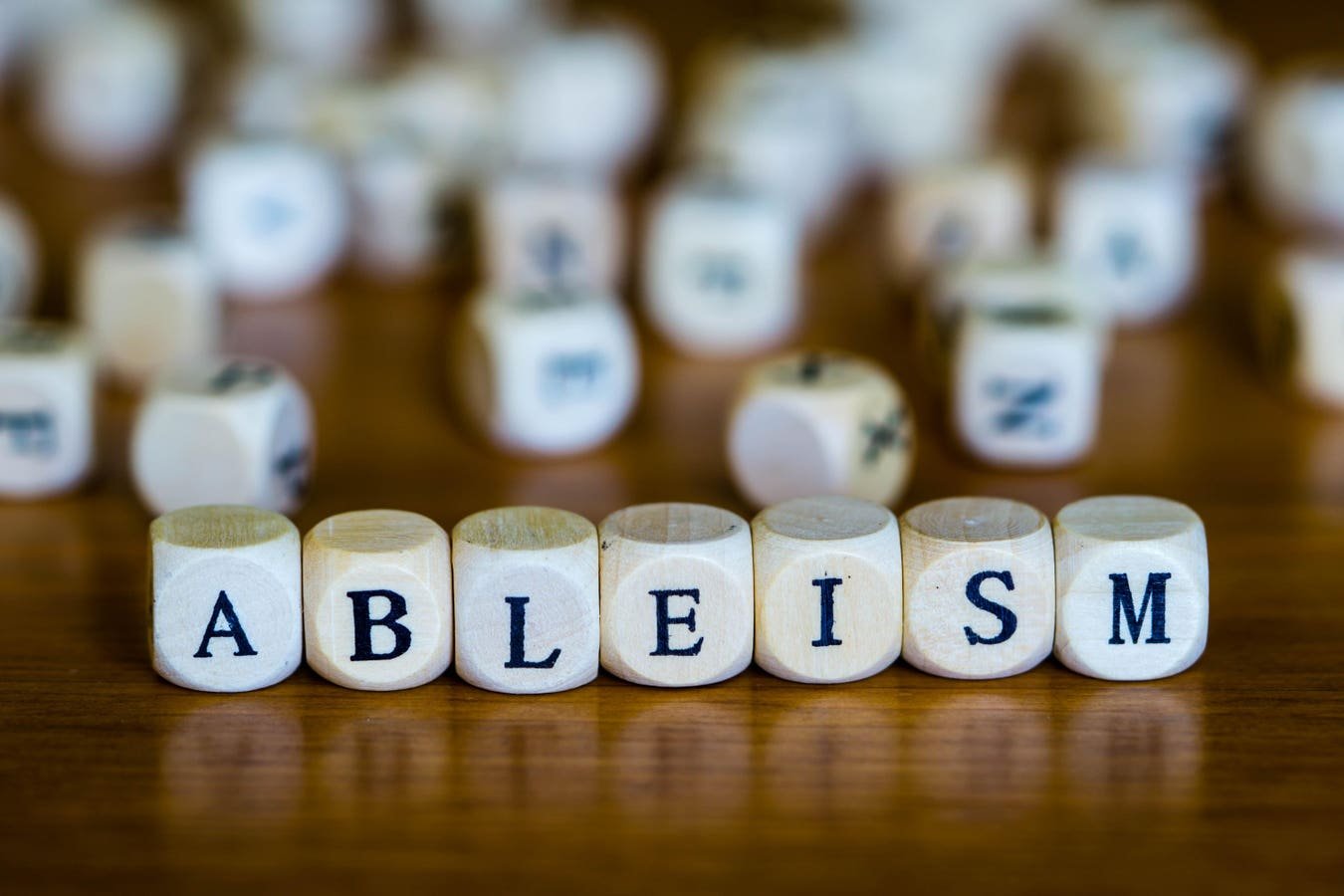Ableism written with wooden cube
Much like “not being a racist” is not the same as being an anti-racist, “not being an ableist” is not the same as being an anti-ableist. Anti-ableism is a set of actions, theories and practices that work to challenge and counter ableism, discrimination and prejudice based on disability.
In my interview with Tiffany Yu, disability advocate and author of the newly released Anti-Ableist Manifesto, she defines disability as, “The interaction between individuals with a health condition with personal and environmental factors including negative attitudes, inaccessibility and limited social support.”
Why Be an Anti-Ableist Ally
Being an anti-ableist ally is critical because:
- One in four adults have a disability.
- 70 to 80% of disabilities are non apparent.
- 37% of people with non-apparent disabilities choose not to disclose at work due to the fear of discrimination and lack of support.
Yu argues that many of us are pre-disabled, meaning we have yet to become disabled, something most of us will likely face as we age or depending on various circumstances in life. As Yu explains, “If we live to the full extent of our lives, we will all eventually be disabled. Yet, people fear becoming disabled in a society that wasn’t designed and built with disability in mind. We all should advocate for disability inclusion because we all are likely to live with it.”
Another less self-serving, more altruistic reason to be an anti-ableist is to want a fair and equitable world that is accessible to all humans. Think about people you know that have a disability, what would the world look like if it was more accessible to them?
How to Be an Anti-Ableist Ally
Being an anti-ablest means reflecting on your privileges, the often unearned advantages we received at birth or have accumulated throughout our lives. There are many different privilege lists online, but Yu recommends Lydia X. Z. Brown’s list as a start. Here are a few to consider:
- When speaking with medical professionals, your medical problems are believed and taken seriously and you can expect doctors to respect your decisions.
- You can buy children’s books and toys featuring people like you.
- No one thinks the way your body and or mind works needs to be fixed or cured.
- If you have children, your ability to be a parent/caregiver is not questioned.
- You know that public safety information will be provided in a format that is accessible for you.
Disabled people are often infanticized and belittled. People automatically assume what help and support looks like for them without asking them what help and support looks like for them. Yu offers a simple three step process the next time you would like to offer assistance to a disabled person.
- Proactively ask if they need help.
- Listen to the answer.
- If they say yes, ask specifically how you can help, instead of assuming what type of help they need.
“There are disabled people that have able bodies. If we want to be inclusive of everyone in the community, using the term ‘non-disabled’ (i.e. deaf) is more accurate. Non-disabled puts no value judgment on the identifier,” Yu explains in defense of the using the term non-disabled vs. able-bodied. It’s important to use inclusive language when trying to be an anti-ablest ally.
In addition to individual actions, systemic changes are needed in the workplace to be more anti-ableist. Yu offers these ideas for consideration in her book:
- Ask yourself if a wheelchair user will be able to participate fully in your event when choosing a venue.
- Offer flexible options in how people choose to participate in meetings (i.e. breaks, virtual participation, reasonable duration).
- If the space isn’t accessible, just say it (i.e. stairs, elevators, bathrooms).
- Have a primary contact for accessibility needs.
- Standardize accessibility check-ins at meetings (i.e. my access needs are… or my access needs are being met).
Visual descriptions can also be a great way to cue anti-ableism. A visual description describes someone’s appearance, pronouns and accessibility needs. Yu notes, “Visual descriptions provide context. Here are the perspectives and identities I might bring to this conversation. It also helps give blind or low vision people an opportunity to name their access needs.”
Despite the perceived progress of disability inclusion in the workplace, we need more anti-ableist allies. As long-time disability advocate Denise Sherer Jacobson said, “The Americans with Disability Act of 1990 was a wonderful achievement. But it was only the tip of the iceberg. You can pass a law but until you can change society’s attitudes, that law won’t mean much.” That’s where allies can make a difference by reflecting on their privileges, using inclusive language and addressing systemic barriers.
Share this content:
